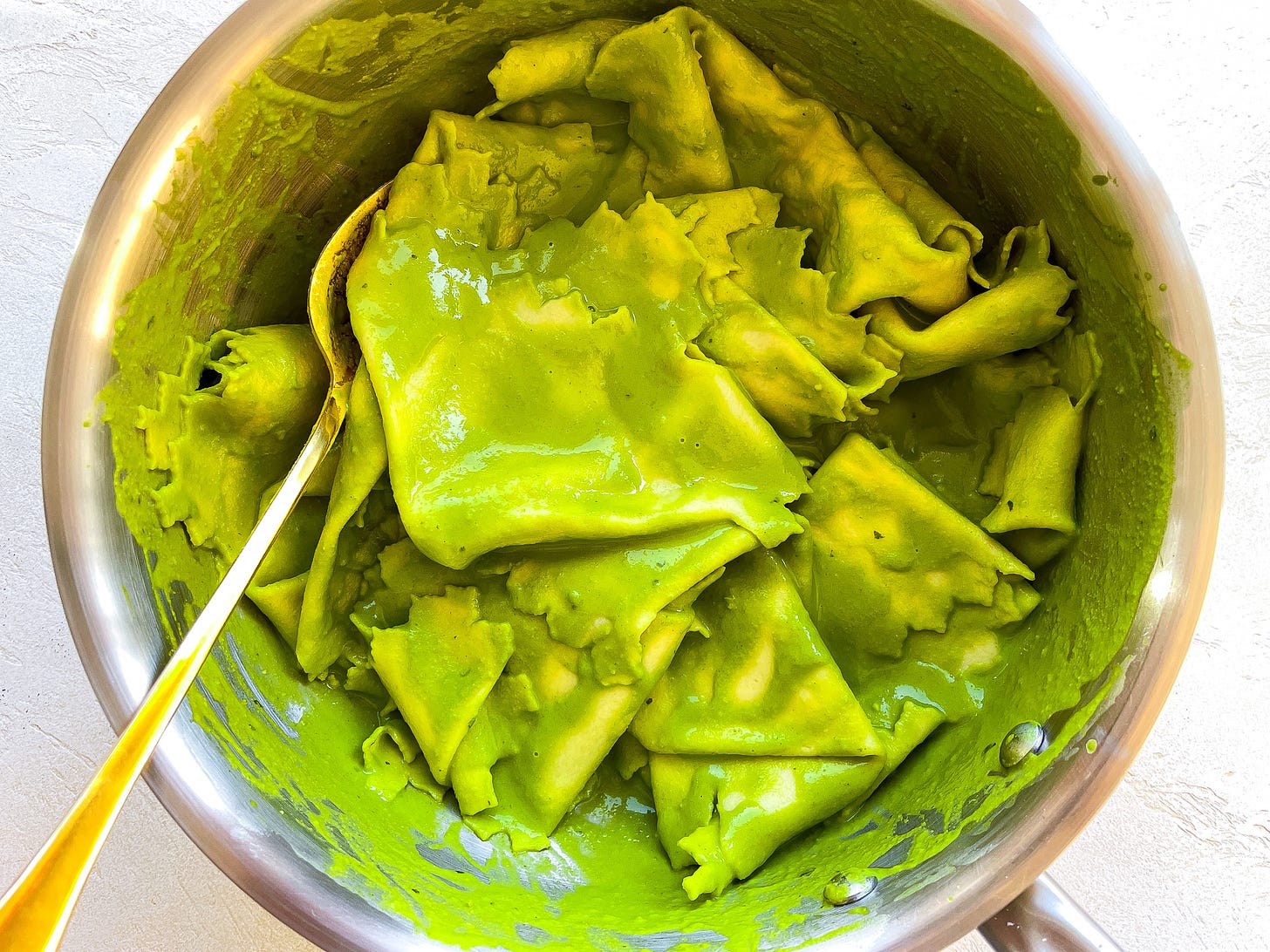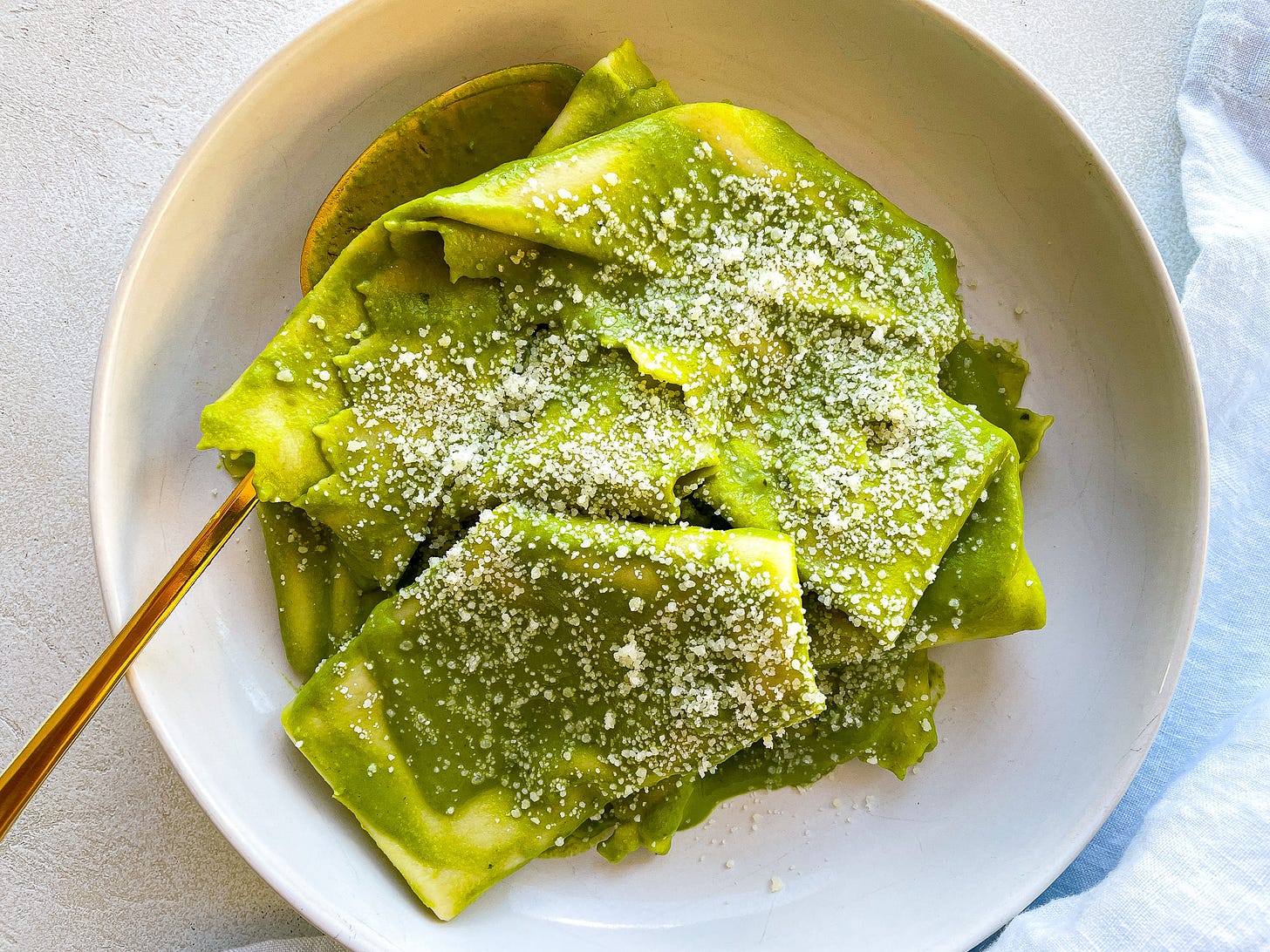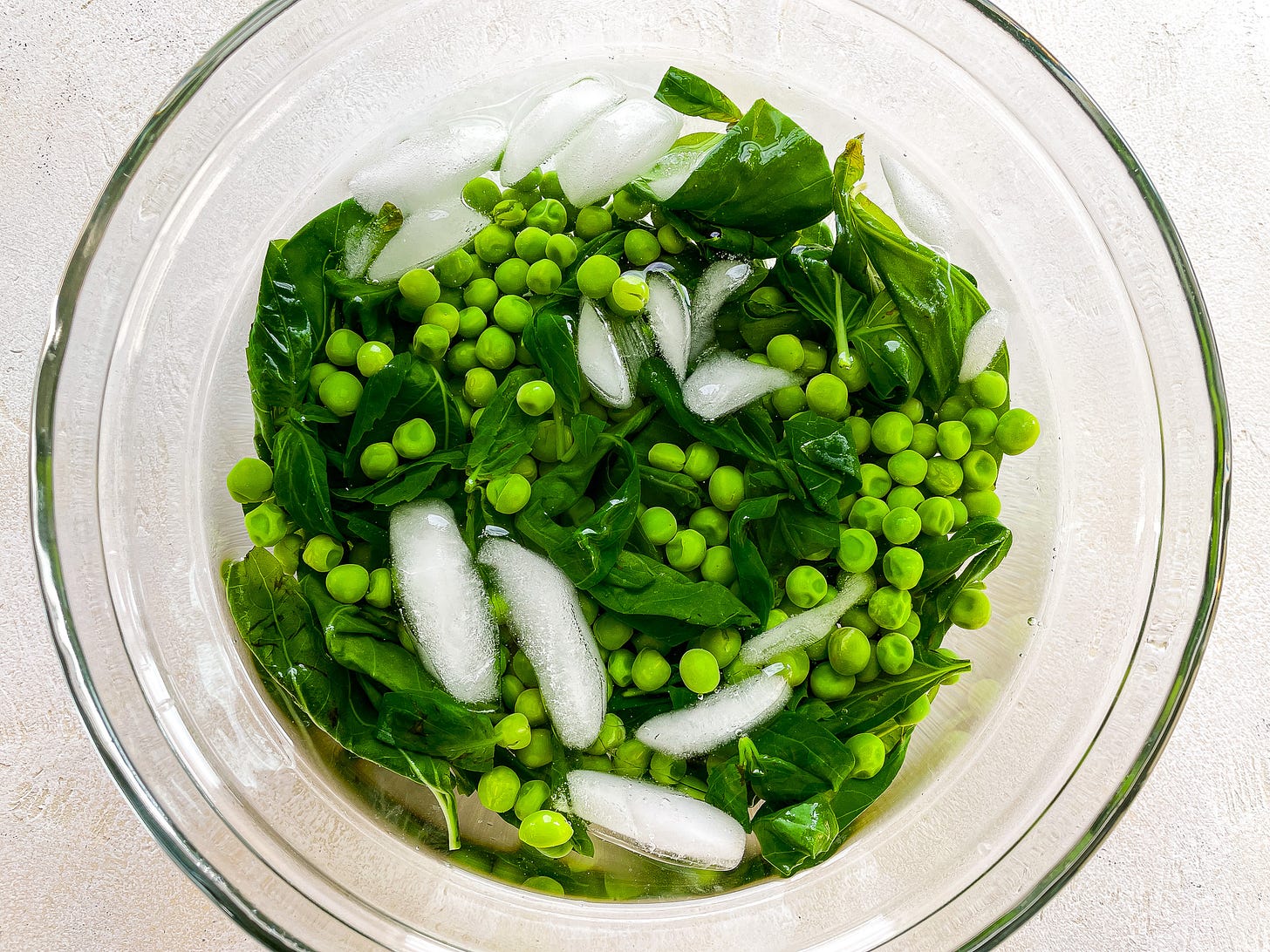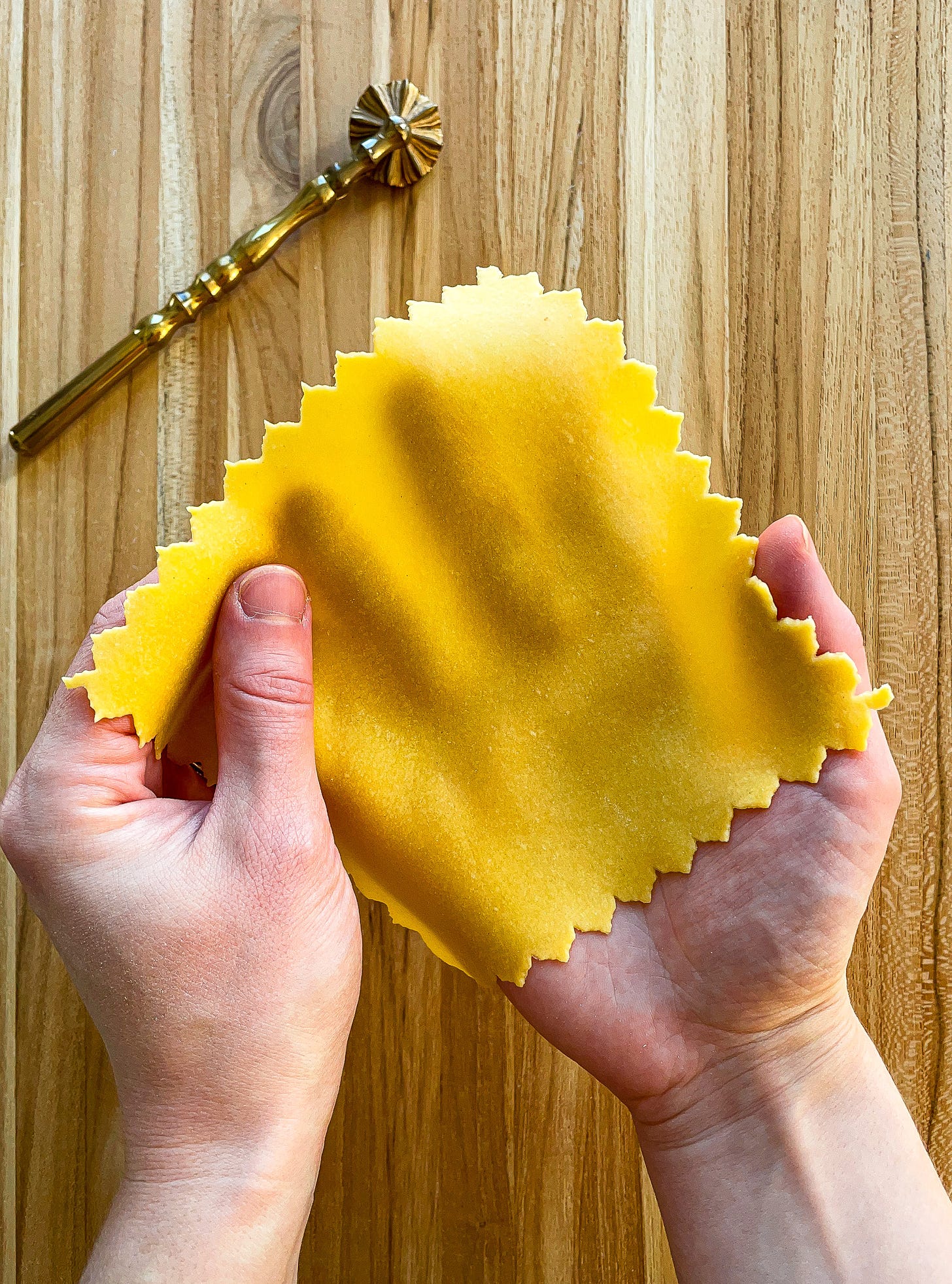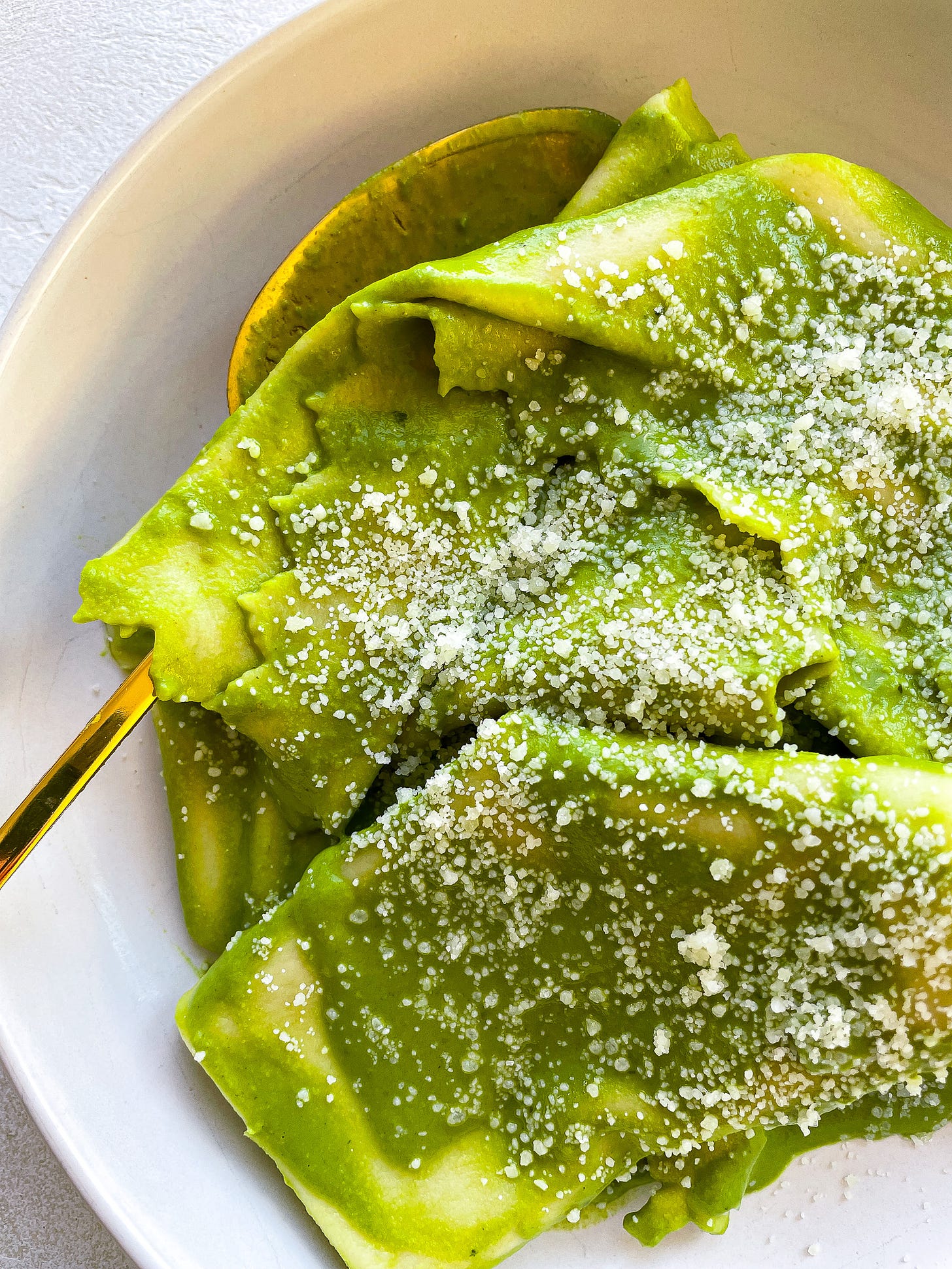Hello Spring, is that you? Are those your verdant blossoms peeking out among the morning frost? I can’t wait to see you again. The in-between seasons are my favorite, and while it feels like just yesterday we were paying tribute to autumn’s gilded leaves and pot-bellied pumpkins, we’re now—somehow—almost on the other side winter. You know how much I love the slow, lazy cooking that comes with the cold, but I can’t say I’m disappointed to welcome the refreshing, lighter fare of spring.
Usually when I plan these Pastas of Month, I start with a shape, or maybe a region of Italy I want to explore. But the inspiration for this installment started with the sauce—actually, an ingredient, and one I can’t help but reach for at any hint of post-winter warmth: peas. I’ll buy them fresh, still cocooned in their pods, when they’re at their peak (usually come April), but frozen peas are great, too, especially when I’m craving fresh flavors during these weeks of almost-but-not-actually spring. I then thought about sauces that would get me even more excited about warmer weather which, of course, brought me to pesto. (Pea pesto has a lovely ring to it, don’t you think?) And then I considered the pasta, and the shapes that are generally paired with pesto, particularly the green king, pesto alla Genovese. Trofie, trenette…aha! Welcoming our March Pasta of the Month: mandilli de saea, silk handkerchiefs from Ligura.
I’ve never met a Ligurian pasta I didn’t like. The aforementioned stubby spirals called trofie and the linguine-like trenette are perhaps the most well-known of the bunch. But there are also corzetti, which come in a few variations, from regal, embossed medallions to rustic, figure-eight-shaped nuggets. Ravioli, too, are etched into Liguria’s culinary DNA: herb ravioli (pansotti); potato, cheese, and mint ravioli (turle); fish ravioli; meat ravioli; vegetable ravioli.
Many of these pastas hail from Liguria’s capital, Genoa, a port city with a long history of maritime trade. Actually, “long history” doesn’t really do it justice: Genoa is one of the oldest continuously inhabited cities in the world, settled in the 4th or 5th century BCE. It flourished under the Romans (and it was they who introduced basil pesto to the area); by the Middle Ages, it had become one of the richest republics in Europe, and a naval and commercial powerhouse. Medieval Genoese merchants didn’t just trade with their neighbors, either—their influence extended all the way into China. And the biggest commodity that passed along those routes? Silk. So there’s little doubt as to how mandilli de saea got their name, and when they were created.
Mandilli de saea (in local Ligurian dialect; fazzoletti di seta in Italian) are pretty much as simple as pasta can get. They’re almost identical to squares of lasagne, but rolled so thin that they’re nearly transparent. Like their namesake, mandilli are delicate, and require a little TLC during cooking to keep them intact. In their earliest iterations, elegant folds of mandilli were served with prescinsêua, a soft, fresh cheese that straddles yogurt and ricotta, or sometimes with ricotta and cinnamon, or with mushrooms and hazelnuts. These all point to the crux of Ligurian cuisine, which, although in many instances was born of wealth, generally relies on lighter flavors and inexpensive, local ingredients—herbs, nuts, and cheeses, as well as citrus, fish, olives, and lots of vegetables. Condiments like prescinsêua, ricotta, and salsa di noci (walnut sauce) are also part of the region’s robust tradition of cucina bianca (“white cuisine”), named aptly for these dishes’ color.
Today, mandilli are almost always paired with basil pesto, having traded their pale faces for pretty green ones in the 19th century. Which brings us back to the beginning, with that pea pesto, inspired by but not bound to tradition. I added a couple of other touches of my own, too: Cutting the mandilli with a lacy Sardinian pasta wheel makes them even more cloth-like; throwing the pesto into a blender yields a smooth sauce that echoes the texture of the pasta itself. As for the dough, I used my standard egg pasta dough here, but it’s also common to use a combination of eggs, water, and olive oil for a chewier texture and lighter color. Ultimately, I urge you to use whatever equipment and ingredients you already have, because this recipe is all about ease: easy to make, easy to eat, easy to enjoy…all while easing into spring.
Mandilli de Saea with Pea Pesto
Serves 4
For the pasta
1 batch egg pasta dough
For the pesto
30 grams (a scant ⅓ cup) walnuts or pine nuts
125 grams (1 cup) frozen or fresh green peas
30 grams (1 ounce; about 1½ packed cups) fresh basil leaves (no stems)
1 large or 2 small garlic cloves, peeled and roughly chopped
15 grams (½ ounce) finely grated Parmigiano-Reggiano, plus more for serving
15 grams (½ ounce) finely grated Pecorino Romano
60 ml (¼ cup) mild-flavored extra-virgin olive oil
Juice of ¼ lemon, plus more to taste
Kosher salt
For the pasta
Make the dough:
Make the dough by hand or in a food processor according to the directions in this post. Let it rest, tightly covered, at room temperature for at least 30 minutes and up to 2 hours. While the dough rests, make the pesto.
For the pesto
Heat the oven to 375°F. Spread the walnuts on a small foil-lined sheet pan. Toast in the oven until golden and fragrant, watching closely, 8 to 10 minutes. Let cool.
Bring a medium pot of water to a boil. Add the peas and blanch until vibrant and tender, about 1½ minutes. Stir in the basil and cook 30 seconds more. (Note: Blanching the basil is optional; it’ll help preserve its color, but feel free to add it in raw, especially if making the pesto in a food processor.)
Drain immediately and rinse under cold water to stop the cooking (or plunge into a bowl of ice water and drain).
For a smoother texture, transfer the peas, basil, nuts, garlic, cheeses, olive oil, and lemon juice to a small blender and purée until very smooth. Season to taste with salt, and add more lemon juice if you’d like.
For a coarser (more traditional) texture, add the nuts and garlic to a food processor fitted with the steel blade. Pulse until well-combined and paste-like, scraping down the sides of the bowl as needed. Then add the peas, basil, and cheeses and pulse, slowly streaming in the olive oil as you do so, until saucy. Season to taste with salt and lemon juice.
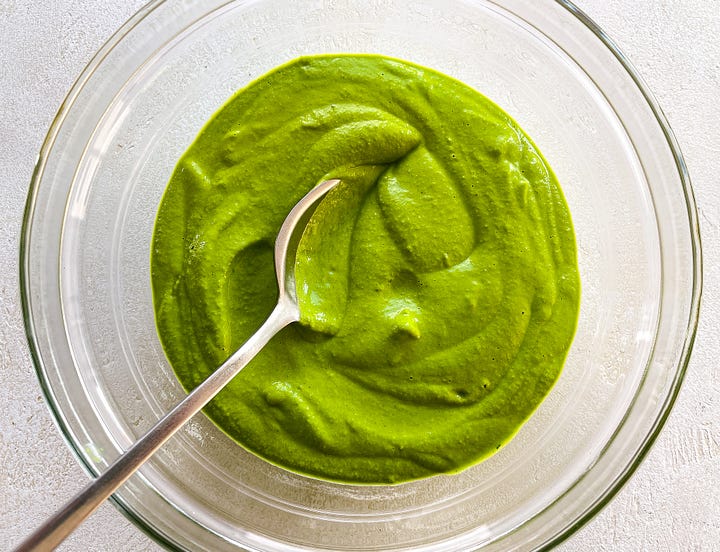
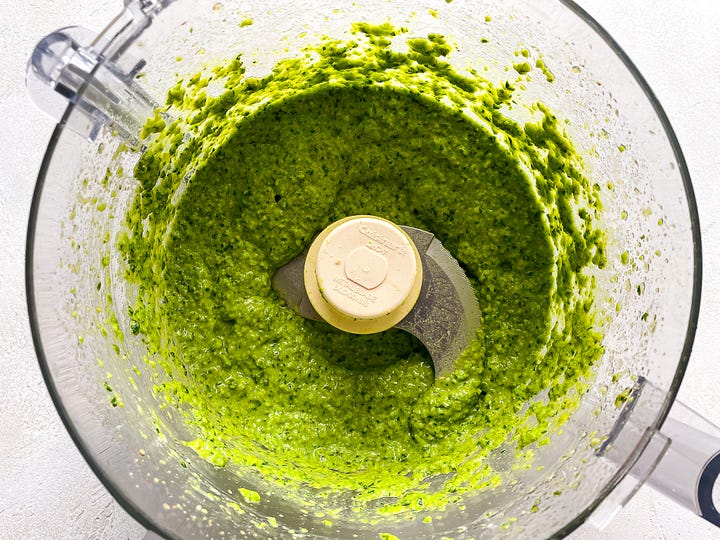
Transfer the pesto to a large metal mixing bowl and set aside. The sauce can also be made in advance and stored in the refrigerator for 1 to 2 days, or in the freezer for up to 3 months.
For the mandilli
Roll the pasta sheets:
Cut off a quarter of the dough and re-wrap the rest. On your work surface, flatten the section of dough with your palm into an oval-shaped pancake that’s about ¼-inch thick. Press the dough between your fingers to thin it out as needed.
Set your pasta machine to its widest setting. Position one tapered end of the oval in the center and roll it through once—you should be left with a longer, thinner oval.
Position the dough lengthwise on your work surface. Then fold the two tapered ends into the center like an envelope so the length is the same or similar to the slot of the pasta roller (about 6 inches; it doesn’t matter if the tapered ends overlap or if there’s space between them). Flatten the dough again with your palm/fingers so it’ll go through the machine easily.
Line up the bottom edge of the pasta envelope with the edge of the machine (the folded ends should run horizontally). Roll the dough through the machine on the same (widest) setting a second time—you should be left with a rectangular-ish piece of dough (it’s okay if the ends aren’t perfect!).
Continue rolling the dough through the machine one time on each progressive setting until you have a very thin (but still sturdy) sheet (on a Marcato Atlas 150, I recommend rolling to setting 7 twice through, or even setting 8; on a KitchenAid machine, roll to setting 8). If the dough feels sticky or tacky as you roll, dust both sides with some 00 or all-purpose flour.
Cut the pasta:
Trim away any uneven edges and cut the pasta sheet, either with a bench scraper, knife, or fluted pasta wheel, into 6-inch squares (a quarter of the dough should yield about four squares). See video above, too!
Arrange the squares on your wooden work surface if you have the space, or in a single layer on a parchment-lined sheet pan. Repeat with the remaining the dough, layering the squares between sheets of parchment if needed to prevent sticking.
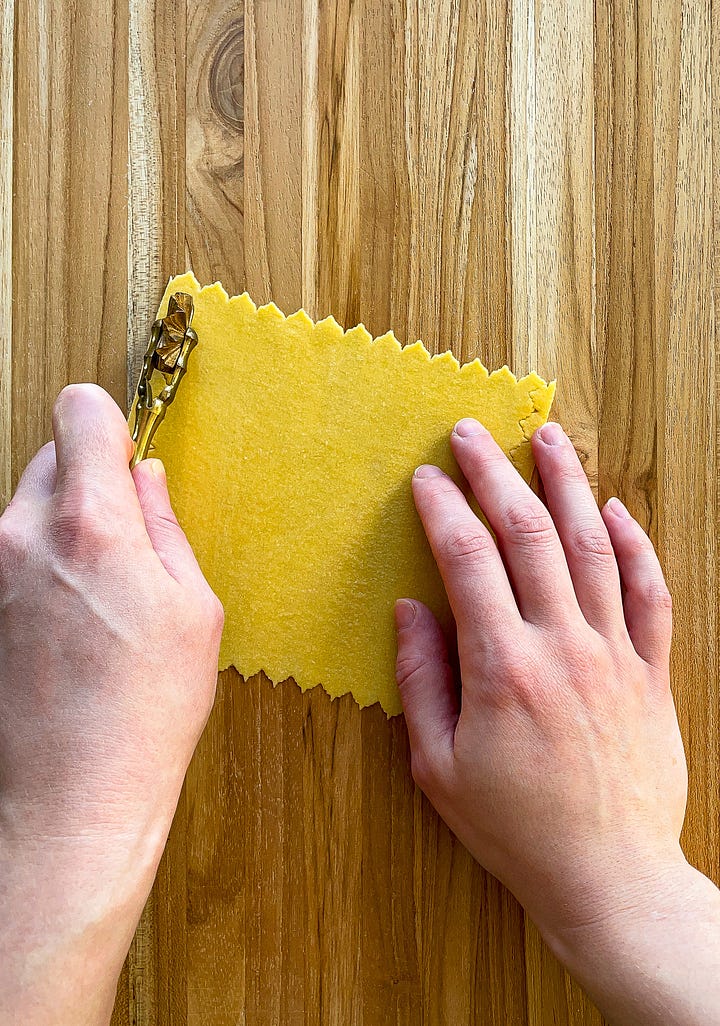
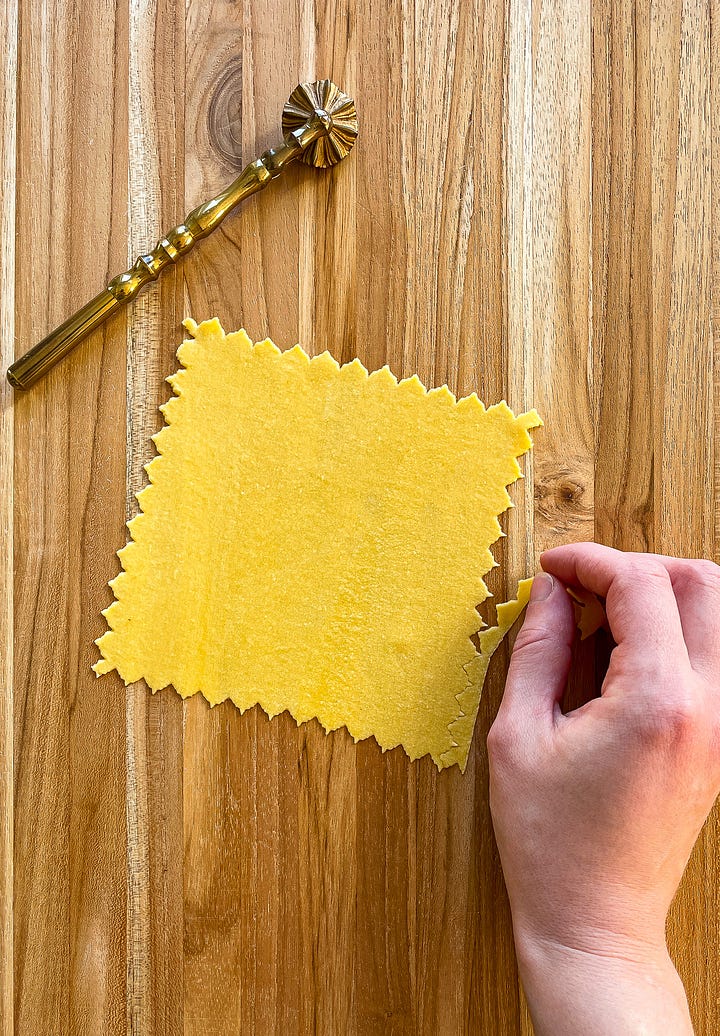
As you go, ball up the dough scraps and re-wrap them to rehydrate. The scrap ball of dough can be re-rolled at the very end and made into more mandilli or any other pasta you’d like.
Storage note: The mandilli can be frozen and stored for up to a couple of months. To do so, freeze the pasta on the sheet pan, making sure the pieces are not touching, for about 25 minutes until solid (if they’re not layered between sheets of parchment, you might need to do this in batches). Transfer the squares to a freezer-safe bag and cook straight from frozen.
For serving
Bring a large pot of water to a boil, then season it generously with salt. Add half of the mandilli, one at a time and in quick succession to prevent sticking, and stir occasionally. Cook until tender, about 2 minutes.
If you can, use a large spider sieve to transfer the pasta directly to the bowl of pesto. (Alternatively, set aside a cup of pasta cooking water before draining the pasta in a colander and immediately tipping it into the sauce to prevent sticking.) Gently rotate the bowl, or use a spatula to very gently stir the pasta and sauce together, adding a splash of pasta water to loosen as needed, until the mandilli are well-coated.
Divide the pasta among bowls or plates. Sprinkle with more Parmigiano-Reggiano and serve immediately.




